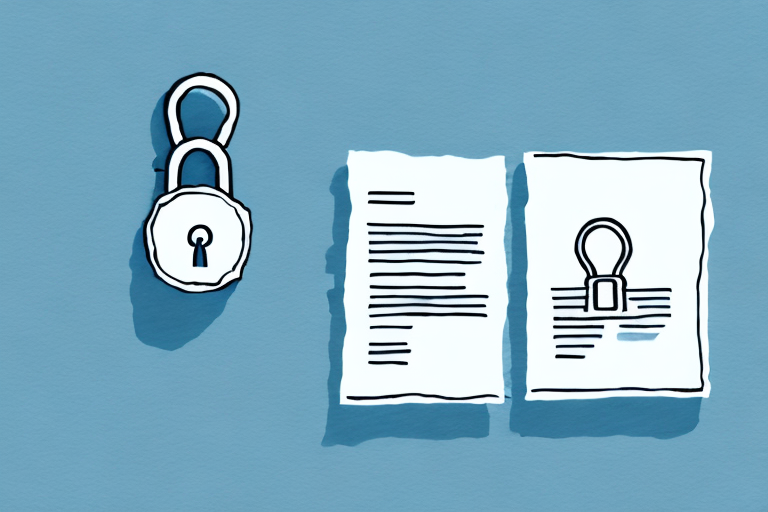In today’s highly competitive business world, the protection of sensitive information and the preservation of confidentiality have become crucial considerations for companies of all sizes and industries. To safeguard their intellectual property, trade secrets, customer data, and other valuable information, businesses often rely on confidentiality agreements, also known as non-disclosure agreements (NDAs). These legal contracts play a significant role in establishing a framework for maintaining the confidentiality of sensitive information and preventing its unauthorized disclosure.
Understanding the purpose of a confidentiality agreement
At its core, a confidentiality agreement serves as a legally binding contract between parties involved in a business relationship, such as employers and employees, companies and contractors, or entities engaged in mergers and acquisitions. The primary purpose of a confidentiality agreement is to ensure that any confidential or proprietary information shared by one party with another remains confidential and is not disclosed to any unauthorized individuals or entities. By establishing explicit obligations and responsibilities for protecting sensitive information, these agreements help maintain trust and prevent the misuse or unauthorized disclosure of confidential information.
Confidentiality agreements are commonly used in various industries, including technology, healthcare, finance, and entertainment. In the technology sector, for example, companies often require employees and contractors to sign confidentiality agreements to protect trade secrets, software code, and other proprietary information. In the healthcare industry, confidentiality agreements are crucial for safeguarding patient data and ensuring compliance with privacy regulations such as the Health Insurance Portability and Accountability Act (HIPAA). Similarly, in the entertainment industry, confidentiality agreements are frequently used to protect unreleased films, scripts, and other creative works from unauthorized disclosure.
Key elements of a confidentiality agreement
A well-drafted confidentiality agreement should contain several key elements to effectively protect confidential information. These elements include:
- Identification of the parties involved: Clearly stating the identities of the parties bound by the agreement, including any affiliates or subsidiaries.
- Definition of confidential information: A comprehensive description of what constitutes confidential information, which may include trade secrets, customer lists, financial data, technical specifications, and any other proprietary information.
- Purpose and scope: Outlining the purpose of the agreement and its intended scope, specifying how long the confidentiality obligations will remain in effect.
- Confidentiality obligations: Setting forth the responsibilities and obligations of each party to protect the confidentiality of the information and prevent its unauthorized use or disclosure.
- Exceptions to confidentiality: Clearly defining any exceptions or exclusions to the confidentiality obligations, such as information that is already in the public domain or obtained through a third party without any confidentiality restrictions.
- Term and termination: Specifying the duration of the agreement and the conditions under which either party can terminate the agreement.
- Remedies for breach: Outlining the potential remedies, such as monetary damages or injunctive relief, in the event of a breach of the agreement.
Importance of protecting sensitive information
The protection of sensitive information is of paramount importance for businesses in today’s digital age. Breaches of confidentiality can have severe consequences, including financial losses, damage to reputation, and compromised competitive advantage. By implementing well-crafted confidentiality agreements, businesses can establish a legal framework for maintaining the privacy of valuable information, discouraging unauthorized disclosure, and providing a basis for legal recourse in the event of a breach.
Scope and limitations of a confidentiality agreement
When drafting a confidentiality agreement, it is essential to clearly define the scope of the agreement’s coverage and any limitations that may apply. The scope of the agreement should encompass the specific information and intellectual property that need protection, while limitations may include circumstances where disclosure is necessary or where confidentiality obligations no longer apply, such as when information becomes publicly available through no fault of the involved parties.
Ensuring enforceability of a non-disclosure agreement
To ensure the enforceability of a confidentiality or non-disclosure agreement, several factors must be considered. Firstly, the agreement should be in writing and signed by all parties involved to establish a clear intention to abide by its terms. Secondly, the terms and obligations should be reasonable and not overly restrictive, as courts may invalidate agreements that place unnecessary burdens on the parties. Finally, the agreement should include provisions for the resolution of disputes and the availability of appropriate remedies in the event of a breach.
Identifying the parties involved in an NDA
Identifying the parties unequivocally is crucial when drafting a confidentiality agreement. The agreement should clearly state the names and contact details of all parties involved, leaving no room for ambiguity or misunderstanding. It is also advisable to include provisions addressing the inclusion of affiliates and subsidiaries as parties to ensure that the agreement’s obligations extend beyond individual entities to cover associated entities as well.
Defining confidential information in a confidentiality agreement
A carefully defined scope of confidential information is critical in a confidentiality agreement. The agreement should explicitly identify the types of information that are considered confidential. Common categories of confidential information include trade secrets, know-how, customer data, financial information, marketing and sales strategies, and any other proprietary information the parties deem confidential. By clearly defining confidential information, the parties can ensure that there is a common understanding of what should be kept confidential.
Duration and termination of a non-disclosure agreement
The duration of a non-disclosure agreement should be clearly specified to ensure that there is no ambiguity regarding its term. Depending on the circumstances, an NDA may have a fixed duration, expire upon completion of a specific project, or remain in effect indefinitely to protect information that requires perpetual confidentiality. Additionally, the agreement should outline the conditions under which either party can terminate the agreement, such as breaches or mutual agreement.
Exceptions to confidentiality obligations in an NDA
Confidentiality agreements typically include exceptions to the obligations of confidentiality. These exceptions may include information that is publicly available, independently developed by the recipient, or disclosed by a third party who had no confidentiality obligations. It is crucial to clearly define these exceptions to avoid disputes and ensure that parties have a shared understanding of the boundaries of confidentiality.
Remedies for breach of a confidentiality agreement
In the unfortunate event of a breach of a confidentiality agreement, it is essential to outline remedies available to the injured party. These remedies may include monetary damages, injunctive relief, and specific performance. By delineating the potential consequences of breaching the agreement, it serves as a deterrent and provides the injured party with legal recourse to protect their rights and enforce the obligations established in the agreement.
Confidentiality agreements in different industries and sectors
Confidentiality agreements are widely utilized in various industries and sectors, each with its specific considerations and requirements. For example, technology companies often rely on NDAs to protect their trade secrets and proprietary software code, while healthcare organizations use them to safeguard patient information and clinical trial data. Similarly, publishing houses, manufacturing companies, and research institutions may all require confidentiality agreements tailored to their respective needs and the unique nature of their business operations.
Considerations when drafting a non-disclosure agreement
When drafting a non-disclosure agreement, several considerations should be taken into account to ensure its effectiveness and suitability for the specific business context. These considerations may include:
- Defining the purpose and scope of the agreement clearly
- Identifying the confidential information in a comprehensive manner
- Setting out reasonable obligations and restrictions
- Including provisions for dispute resolution and governing law
- Reviewing and revising the agreement regularly to reflect changing circumstances
Common mistakes to avoid in confidentiality agreements
Even with the best intentions, mistakes can occur when drafting confidentiality agreements. To avoid potential pitfalls, it is important to steer clear of common errors, such as:
- Being overly vague or ambiguous in defining confidential information
- Failing to include obligations that survive termination
- Not considering the potential need for amending the agreement in the future
- Omitting appropriate remedies for breach
- Using a one-size-fits-all approach without tailoring the agreement to the specific circumstances
Legal considerations for international NDAs
When dealing with international business relationships, additional legal considerations come into play. Confidentiality agreements involving parties from different jurisdictions may require careful evaluation of potential conflicts of law and the choice of governing law provisions. Moreover, cross-border agreements may necessitate consideration of specific international laws, such as data protection regulations or export control restrictions, to ensure compliance and enforceability.
Significance of mutual versus unilateral NDAs
Confidentiality agreements can be classified as either mutual or unilateral, depending on the obligations undertaken by the parties involved. A mutual NDA imposes confidentiality obligations on both parties, making it suitable for situations where both parties disclose and receive confidential information. Conversely, a unilateral NDA requires only one party to protect and maintain the confidentiality of the disclosed information. The choice between a mutual or unilateral NDA depends on the nature of the business relationship and the extent of information exchange.
Confidentiality agreements in employment contracts
Confidentiality agreements are commonly included in employment contracts to protect sensitive information disclosed to employees during the course of their employment. These agreements ensure that employees understand their obligations to maintain the confidentiality of trade secrets, client lists, product information, marketing strategies, and any other proprietary information they may access while working for the company. By incorporating confidentiality provisions into employment contracts, employers can strengthen their legal position in case of any unauthorized disclosures or misuse of confidential information by employees.
Confidentiality agreements for business partnerships and collaborations
Business partnerships and collaborations often involve the sharing of confidential information, making confidentiality agreements vital to protect the interests of all involved parties. When entering into partnerships or collaborations, it is crucial to establish clear boundaries regarding the use and disclosure of confidential information. By having a well-drafted confidentiality agreement in place, each party can have confidence that their proprietary information will be handled with care and not utilized for unauthorized purposes.
Protecting intellectual property through NDAs
Confidentiality agreements play a crucial role in protecting intellectual property (IP) rights. By designating IP-related information as confidential, businesses can prevent the unauthorized disclosure or misuse of patents, trademarks, copyrights, and other valuable creations. Confidentiality agreements provide a strategic tool to establish a legal framework for maintaining the confidentiality of IP while facilitating collaborations, licensing, or partnership opportunities that may require sharing sensitive information.
Role of confidentiality agreements in mergers and acquisitions
In the context of mergers and acquisitions (M&A), confidentiality agreements play a pivotal role. During due diligence, potential buyers gain access to extensive confidential information about the target company’s financials, customer data, intellectual property portfolio, and other critical information. Non-disclosure agreements ensure that this information remains confidential throughout the M&A process, protecting the interests of both the target company and the potential acquirer. These agreements often contain provisions that impose confidentiality obligations even after the conclusion of the M&A transaction.
Note
The subheadings above are suggestions based on the given article title, but the actual content and structure may vary depending on specific requirements and research conducted for the article. It is important to conduct thorough research, consult legal professionals, and tailor the content to the specific needs and circumstances of the business relationships involved.




